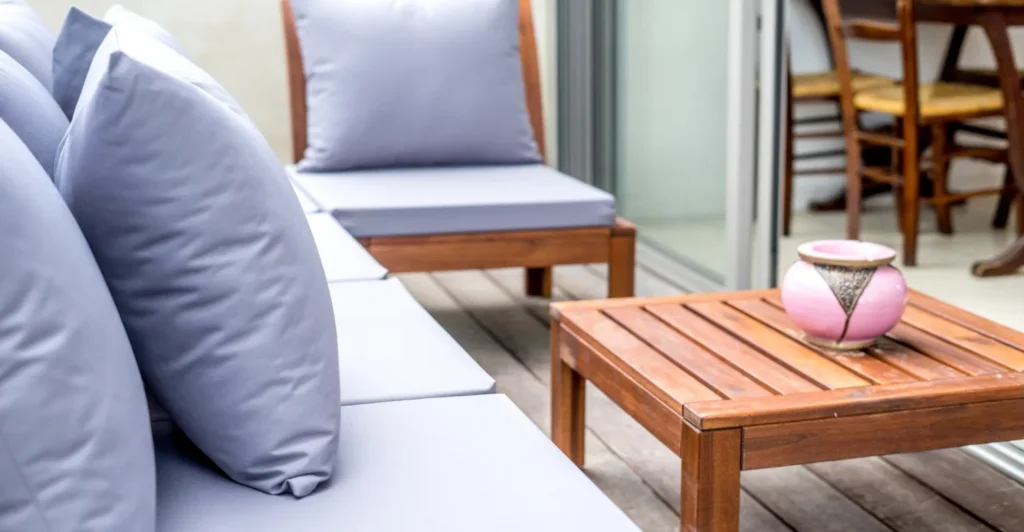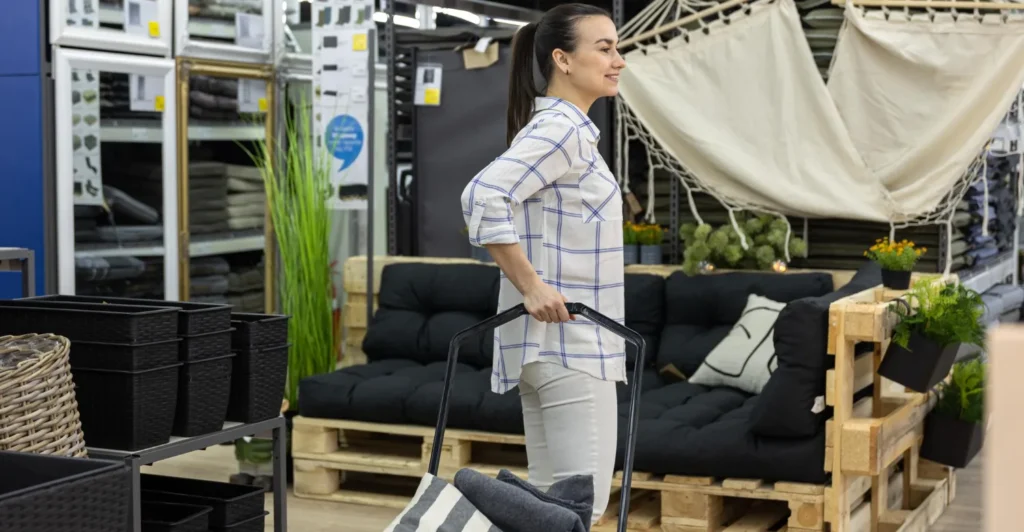Nothing ruins a sunny afternoon faster than dirty, faded patio furniture. You plan to relax outside, but the moment you sit down, dust, pollen, or stains remind you it’s been a while since you gave your furniture a proper clean. Many homeowners face this same problem every season: how to clean patio furniture without damaging it.
The good news? You don’t need fancy tools or hours of scrubbing. With the right cleaning approach, your outdoor chairs, tables, and loungers can look as good as new again. Whether your set is wood, metal, or plastic, regular care keeps it lasting longer and ready for every barbecue or quiet morning coffee.
If you’re updating your space or need new gear, choosing a trusted outdoor equipment supplier can also help you find easy-to-maintain, weather-resistant furniture built to last. But first, let’s make sure what you already have stays spotless and fresh all year round.
Why Good Maintenance Matters


Outdoor furniture gets hit hard. Sun, rain, dust, pollen, and spills, all of it adds up. Left unchecked, grime and weather damage can shorten the life of cushions, fade coatings, rust metal frames, or crack wood. According to cleaning guides, a mild soap and water approach does much of the job. By developing a simple routine, you avoid major deep-cleans or replacements. Your outdoor setup stays fresh, usable, and welcoming.
Step 1: Prepare Properly Before You Clean
First, move the furniture into a shaded or covered space if you can, or at least choose a day when rain isn’t expected. Sweep off the obvious dirt, leaves, or debris from surfaces and cushions. Remove cushions and separate covers if possible; cleaning frames and fabrics separately helps prevent damage. Some sources suggest rinsing with a hose and then using a mild soap solution.
Step 2: Cleaning Different Materials (and What Works Best)
Metal, Plastic & Resin Frames
Most metal (aluminum, steel) and plastic/resin furniture handles a simple rinse with warm water plus a few drops of gentle dish soap. Use a soft-bristle brush or sponge for frames, then rinse thoroughly and dry. Metal frames risk rust if water is left pooled. Avoid using harsh chemicals or aggressive tools on these surfaces.
Wooden Furniture
Wood needs extra care because it reacts to moisture, sun, and temperature swings. Begin with soap and water to remove dirt. If you observe cracking, fading, or absorption of water (no longer beading on the surface) it’s time to apply oil or sealant.
Avoid strong pressure-washing unless the wood is rated for it; too much force can damage grain or loosen joints.
Wicker, Rattan & Natural Weaves
These materials trap dust in crevices. Vacuum with a brush attachment or dust thoroughly before wiping with a mild soap solution. Avoid soaking; let pieces dry thoroughly.
Cushions, Fabrics & Upholstery
Fabrics behave differently depending on whether they have removable covers or not. Check labels. For removable covers, wash in cold water with mild detergent if the label allows. For fixed cushions, vacuum first, then spot-clean with mild soap or fabric-safe cleaner, rinse, and air dry. Mold and mildew are bigger risks if moisture remains.
Plastic Lumber or Resin Materials
These are among the lowest-maintenance, but still need basic cleaning: soap and water do the job for many. Some plastic pieces can handle diluted bleach for hard-to-remove marks—but test first and check compatibility.
Step 3: Deep Cleaning and Maintenance Schedules
How often you clean depends on your use and climate. If your furniture sits by a pool, in the sun, or under trees, more frequent cleaning pays off. One major home-care site suggests a deep clean at least twice a year: once in spring and again in fall.
For other pieces, light cleaning every few weeks, coupled with an end-of-season more thorough wash, is practical. Don’t skip checks for rust, loose screws, worn cushions, or cracked wood; addressing these early avoids bigger jobs later.
Step 4: Protecting and Storing Your Furniture


Use Covers & Proper Storage
When your furniture is not in use, especially during off-season or bad weather, covering and storing cushions indoors or in weather-resistant boxes helps. Moisture, pests, and sun exposure are big risks. The major Swedish retailer recommends storing cushions in dry places and covering frames if they’re plastic or wood.
Apply Protective Coatings
Wood, metal, and some plastic pieces benefit from protective coatings. For wood, a penetrating oil or sealant helps repel water and UV damage. For metal, inspecting for rust and applying rust inhibitor or wax keeps surfaces intact. Cleaning guides warn that harsh chemicals can damage finishes, so stick with gentle protectants.
Shield from Sun and Elements
Direct sunlight fades fabrics and weakens materials. If possible, place your furniture in partial shade, or add umbrellas/shade sails to the mix. If you live in an extreme environment (very humid, salty air, heavy snow) additional protection may be needed.
Step 5: Small Repairs & Refreshing Look
Scratches on wood, chipped metal paint, torn cushions, these happen. Instead of letting them worsen, deal with them early. Tighten screws on wobbling chairs, replace damaged cushion covers, sand, and re-stain wood or touch up metal paint. Keep your outdoor furniture looking like new rather than waiting until it’s ruined.
Updating accessory pieces like new cushions, fresh cover fabrics, or replacing rust-prone hardware gives places a quick refresh without full replacement.
Step 6: Material-Specific Advanced Tips
For Wicker/Rattan
Wicker in humid regions might grow mildew. A soft solution of soap and water, followed by full drying in the sun, helps. One blog also recommends choosing furniture with fabrics designed for outdoor use (for example, Sunbrella) to avoid quick deterioration.
For Metal Frames
Inspect hidden areas where water may pool or salt accumulate (near pools or coastal homes). Remove rust spots with white vinegar, scrub gently, rinse, and dry. Then apply a protective finish or wax.
For Wood Furniture
Wood softens when wet and cracks if dried too fast. After soap cleaning and drying, apply a wood oil or UV-resistant sealant. If rain no longer beads on the surface and is absorbed, it’s time to re-treat.
For Fabric / Upholstery
Spot cleans are vital for food and drink spills. If mildew appears, treat with a soap and vinegar mixture, rinse, and dry in full sun. Also, rotate the cushions so one side doesn’t fade faster.
How Professionals Can Help
Outdoor equipment professionals do more than just supply furniture; they support the longevity and functionality of your space. They offer personalized care kits, protective covers, and provide advice on material-specific cleaners and sealants. For larger sets, built-ins, or pieces that require custom cushions or covers, they can assist with sourcing, fitting, and even seasonal storage solutions. Their expertise ensures prompt maintenance, keeping your investment in top condition with the right products and expert advice.
Conclusion
Your outdoor furniture deserves attention, because it does so much for you. When you dedicate even a little effort to learning how to clean patio furniture, you’re protecting comfort, style, and longevity all at once. Mild soap, proper rinsing, seasonal routines, and smart storage turn weather-worn sets into welcoming outdoor spots year after year.
Working with a reliable outdoor equipment supplier gives you access to right-fit products, covers, care kits and expert advice. Let your outdoor furniture reward you with long afternoons, casual dinners, and relaxed mornings, knowing it’s clean, cared for, and ready for every moment. Start your upgrade, your future self will thank you.
FAQs About Patio Furniture Cleaning Tips
How often should I clean outdoor furniture?
For most use cases: dust and rinse monthly, deep clean in spring and fall. More frequently if in the poolside or heavily used areas.
Can I pressure wash my patio furniture?
Only if the material is rated for it. Pressure-washing wood or fabric can damage finishes or cause water intrusion. Be cautious.
What’s the best way to clean fabric cushions?
Check the label. If covers are removable, wash cold; for fixed cushion,s vacuum first, then use mild soap solution and air-dry completely. Avoid bleach unless indicated.
How can I prevent mildew on outdoor furniture?
Ensure cushions are dry before storing. Use covers, store indoors in humid seasons, treat fabrics with mildew-resistant spray, and ensure airflow around cushions.
Should I apply sealant or oil to my wooden patio furniture every year?
Yes, especially if exposed to sun or moisture. A good check: if water stops beading and gets absorbed, re-treat. As reported by maintenance guides.

